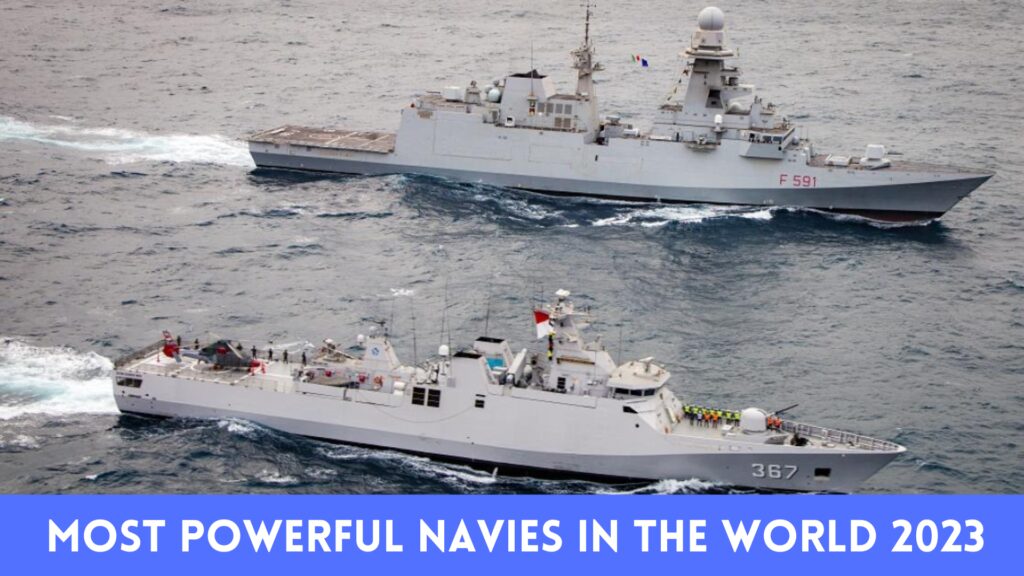The content introduces the naval power of the United States Navy and provides an overview of its fleets and global operations. It highlights the United States Pacific Fleet (USPACFLT), responsible for maintaining American maritime presence in the Indo-Pacific region, and the United States Atlantic Fleet (USLANTFLT), responsible for securing American strategic interests in the Atlantic Ocean and Caribbean Sea. The content mentions the navy’s ability to conduct presence operations, provide humanitarian assistance and disaster response, engage in combat operations, and carry out maritime security operations. It concludes by emphasizing the navy’s role in maintaining American maritime dominance and protecting national interests worldwide.
Exploring the Naval Power of the United States Navy
Fleet Overview
The United States Navy, as of 2021, is the largest and most powerful navy in the world. It operates several fleets, each responsible for different geographical regions. The overall command is held by the Chief of Naval Operations (CNO). The fleets are assigned to specific areas of operation to ensure global coverage and to protect American interests across the world.
United States Pacific Fleet (USPACFLT)
The USPACFLT is the largest fleet, responsible for maintaining American maritime presence in the Indo-Pacific region. It operates from its headquarters in Pearl Harbor, Hawaii, and covers an area spanning from the West Coast of the United States to the western border of India. The Pacific Fleet plays a crucial role in maintaining regional stability, ensuring freedom of navigation, and deterring any potential adversarial actions.
United States Atlantic Fleet (USLANTFLT)
Based in Norfolk, Virginia, the USLANTFLT operates in the Atlantic Ocean and the Caribbean Sea. It is responsible for securing American strategic interests in this area, including protecting vital sea lines of communication and maritime trade routes. The fleet conducts both combat and humanitarian operations, and its presence serves as a deterrent to any potential threats to American sovereignty.
Global Operations
With its extensive fleet, the United States Navy is able to conduct a wide range of operations across the globe. These operations include, but are not limited to:
Presence Operations
Presence operations involve regularly deploying naval forces to strategic locations worldwide to demonstrate American commitment to global stability and security. These deployments often involve conducting joint exercises and training with partner nations, fostering interoperability, and strengthening international relationships. Presence operations also help deter potential adversaries and maintain freedom of navigation.
Humanitarian Assistance and Disaster Response
The United States Navy plays a key role in providing humanitarian assistance and disaster response in times of crisis. From delivering supplies and medical aid to providing search and rescue capabilities, the navy’s fleet can rapidly respond to natural disasters, such as hurricanes, earthquakes, or tsunamis. The navy’s ability to deploy ships and aircraft quickly allows it to reach affected areas swiftly and provide much-needed support and relief.
Combat Operations
As the most powerful navy in the world, the United States Navy is prepared to engage in combat operations to protect American interests and uphold global security. This includes conducting offensive and defensive operations, such as anti-piracy missions, counter-terrorism efforts, and responding to regional conflicts. The navy’s capabilities, ranging from aircraft carriers and submarines to guided-missile destroyers and amphibious assault ships, provide it with a significant advantage in projecting force and executing missions worldwide.
Maritime Security Operations
Maritime security operations focus on countering piracy, smuggling, and other illegal activities that pose a threat to global maritime trade. The navy actively patrols key waterways, such as the Strait of Hormuz or the Strait of Malacca, to ensure the safe passage of goods and maintain global economic stability. Additionally, the navy collaborates with international partners to conduct joint patrols and share intelligence, enhancing collective efforts to combat maritime threats.
Conclusion
The United States Navy’s fleet and global operations play a crucial role in maintaining American maritime dominance and protecting national interests across the globe. Whether through presence operations, humanitarian assistance and disaster response, combat missions, or maritime security operations, the navy stands ready to defend American sovereignty, promote regional stability, and ensure freedom of navigation. The navy’s global reach, combined with its unmatched capabilities, reinforces its position as the most influential naval force in the world.
